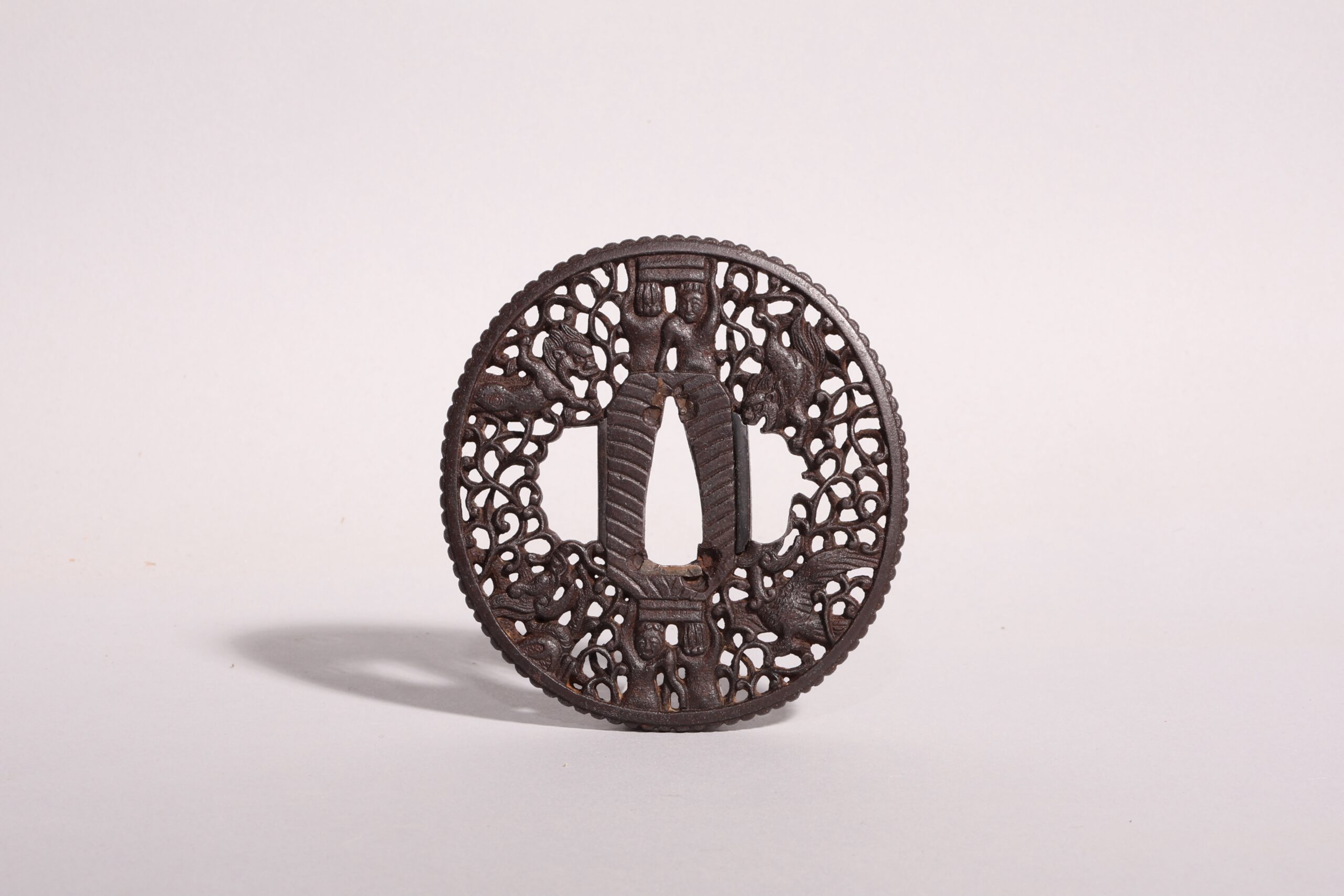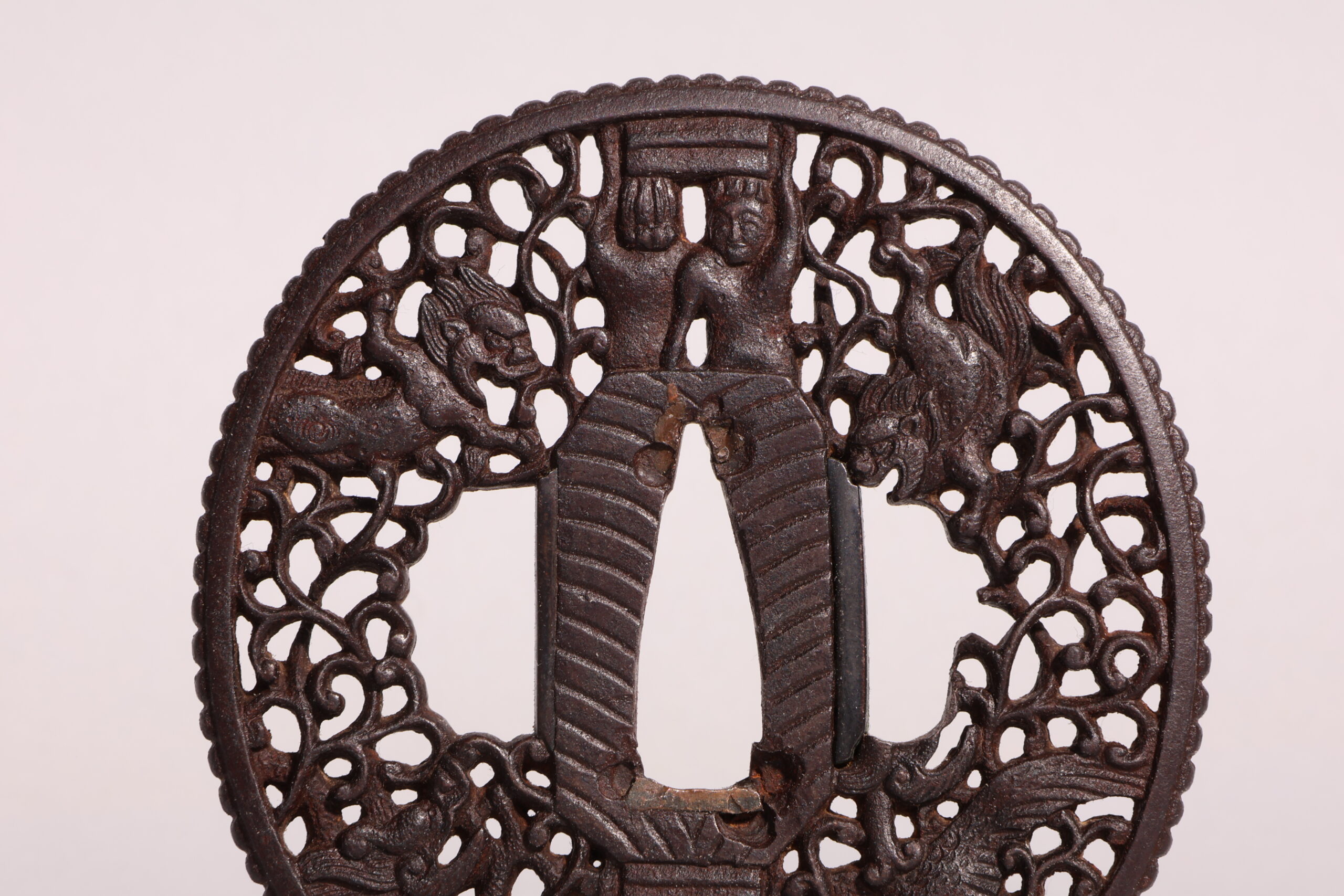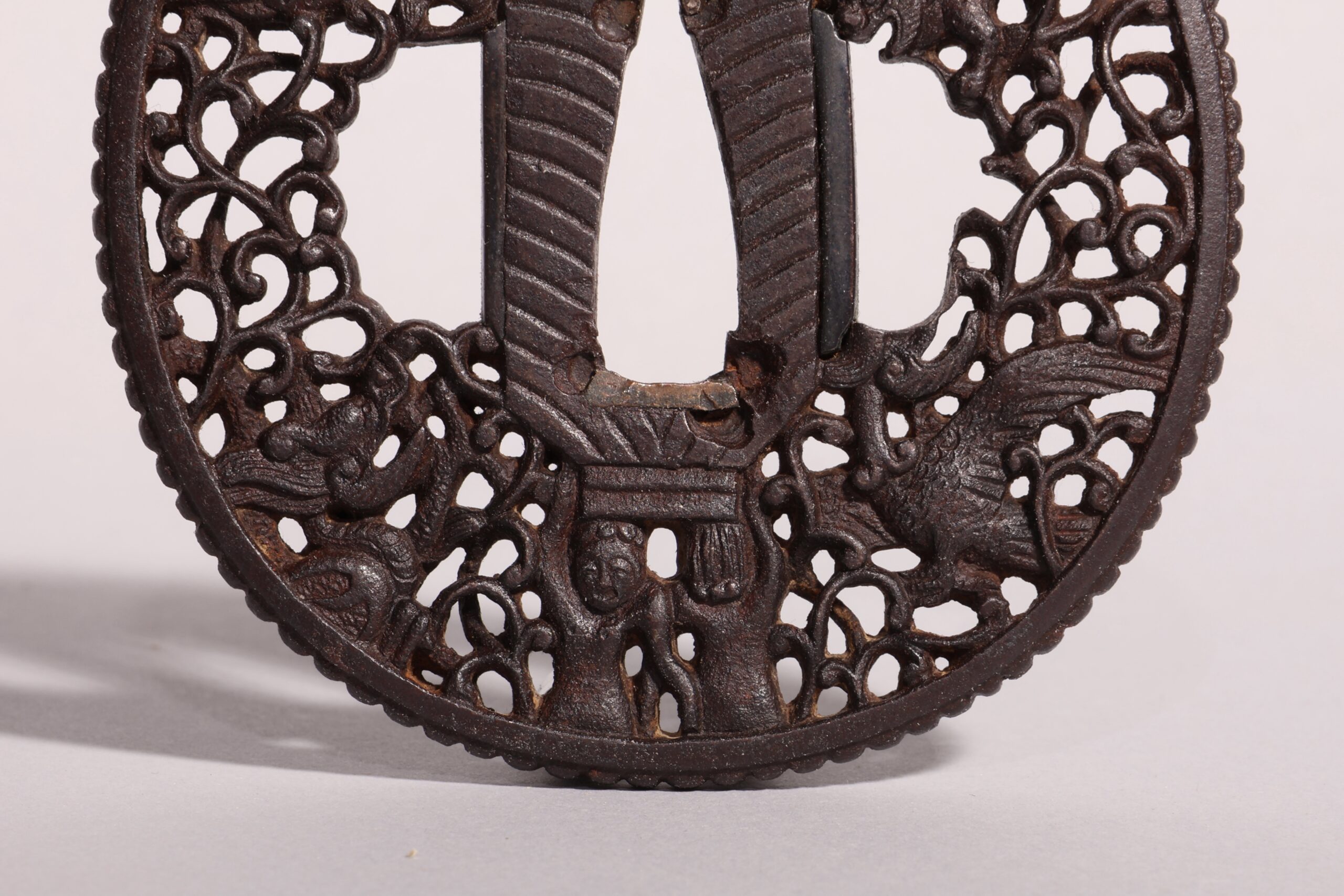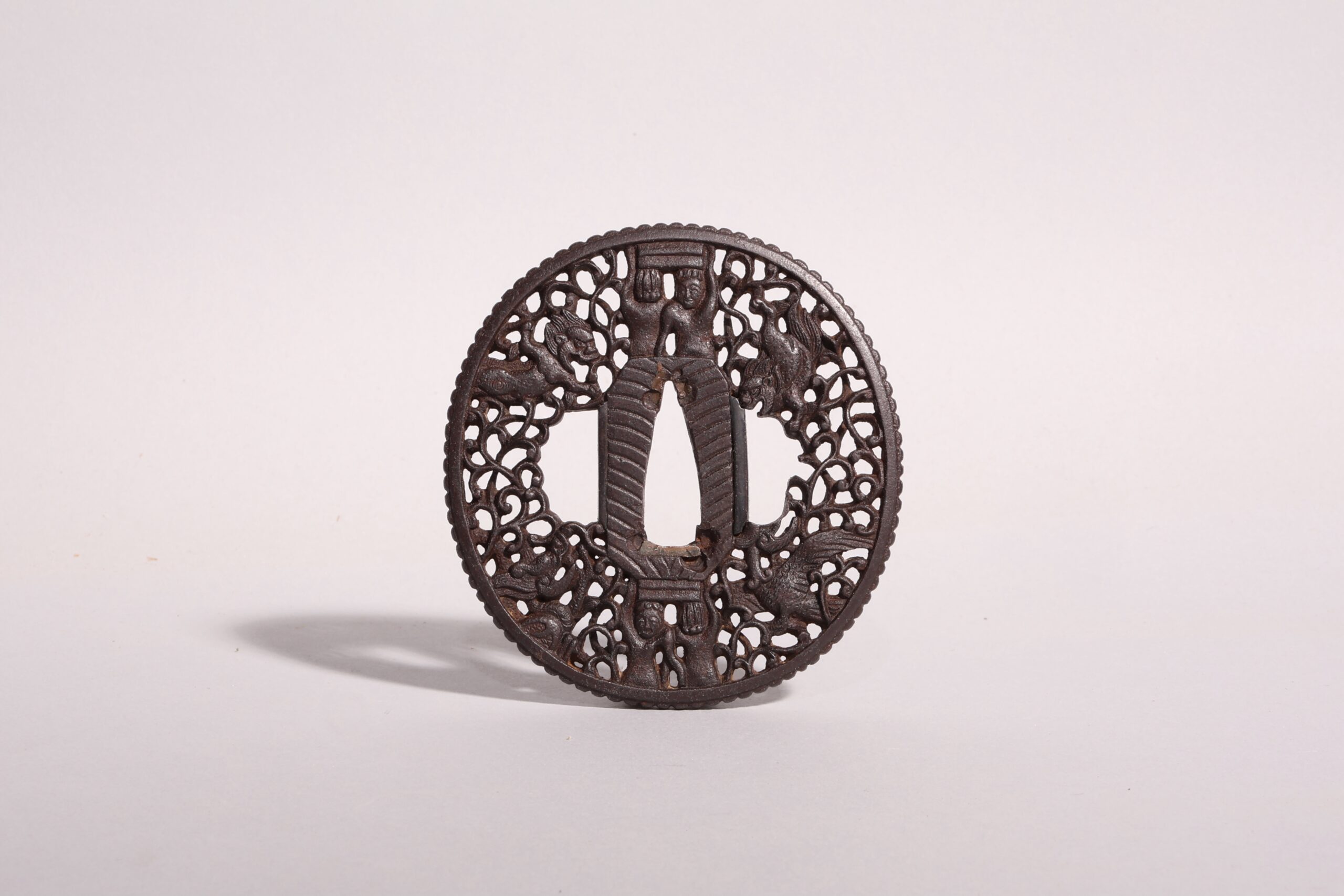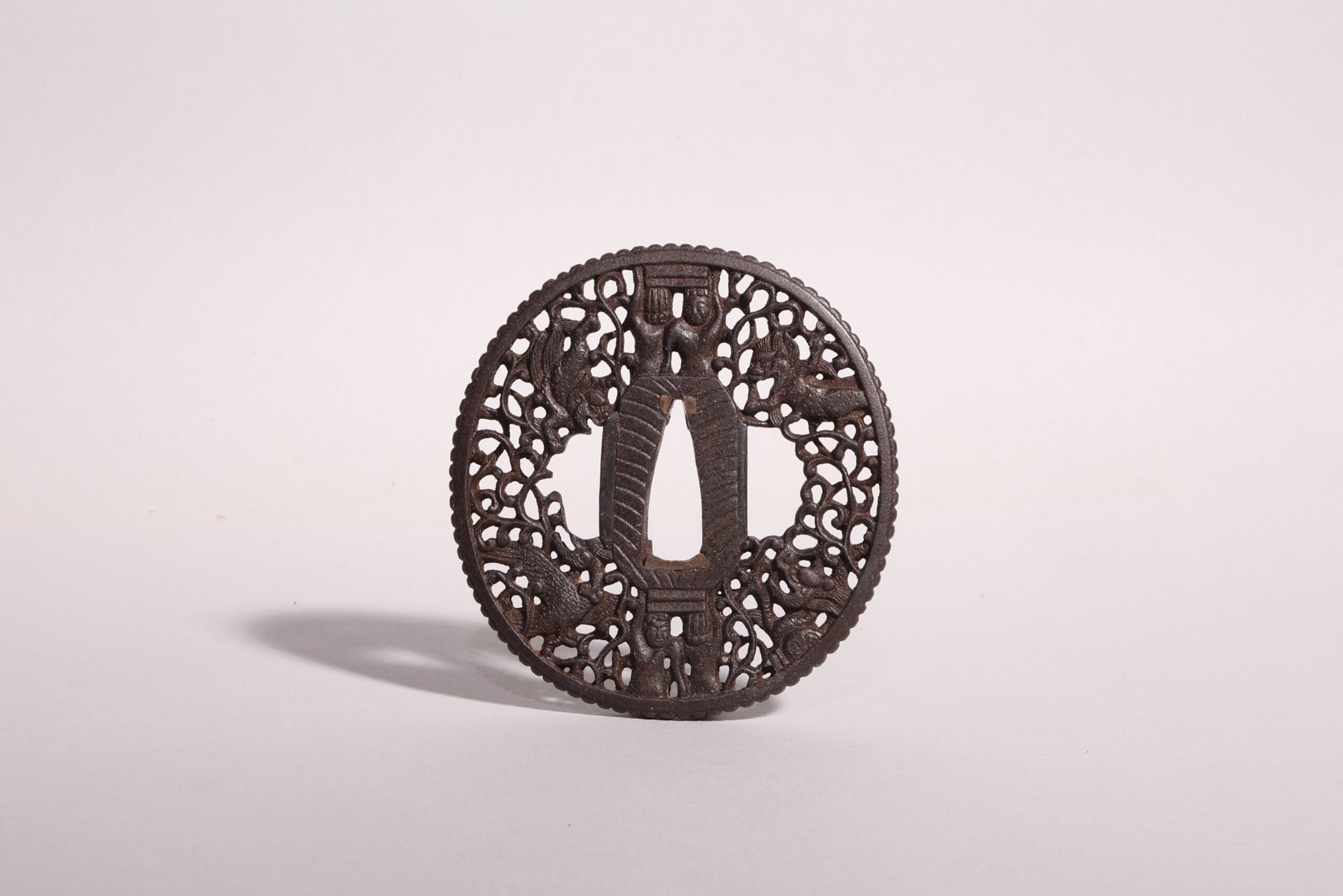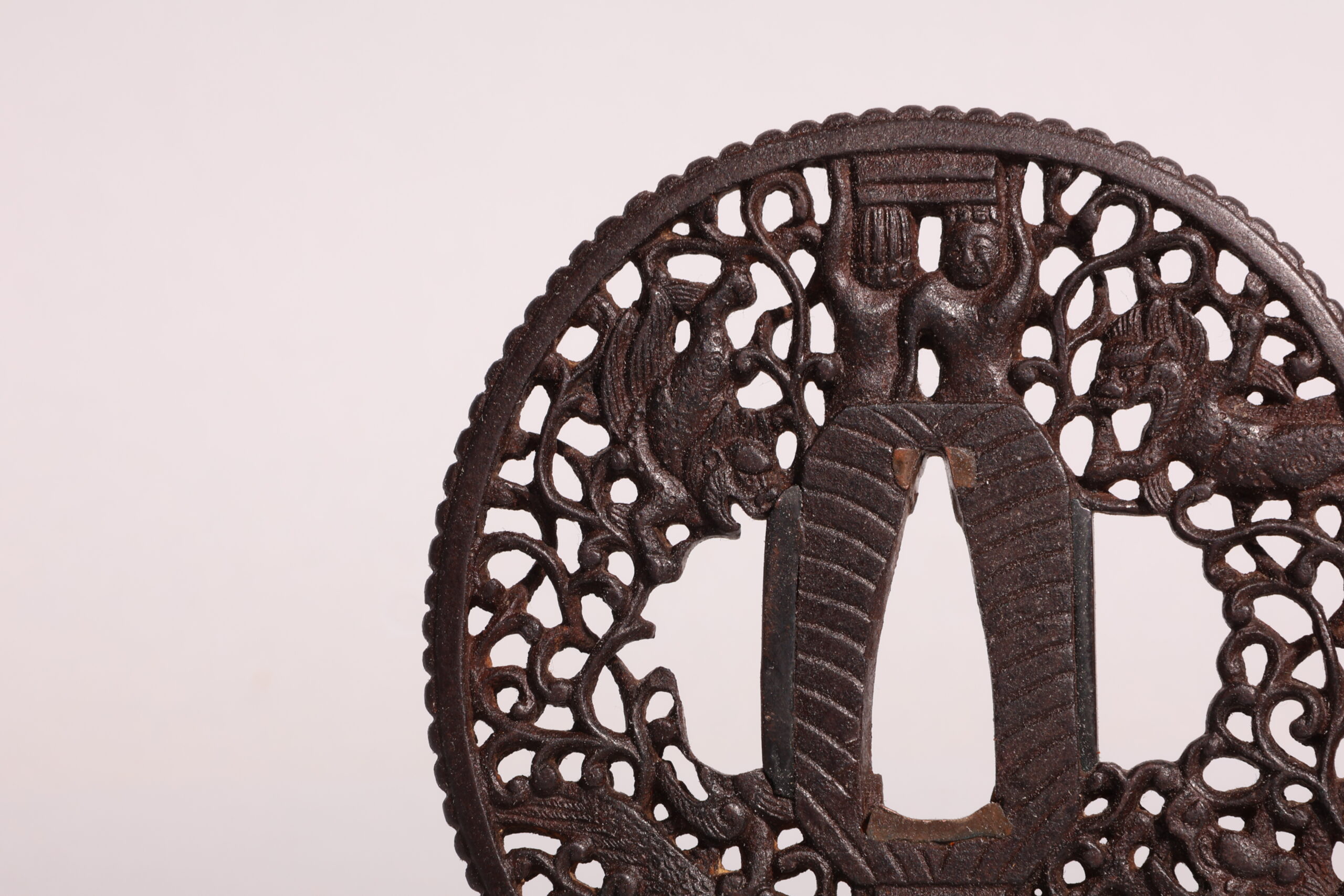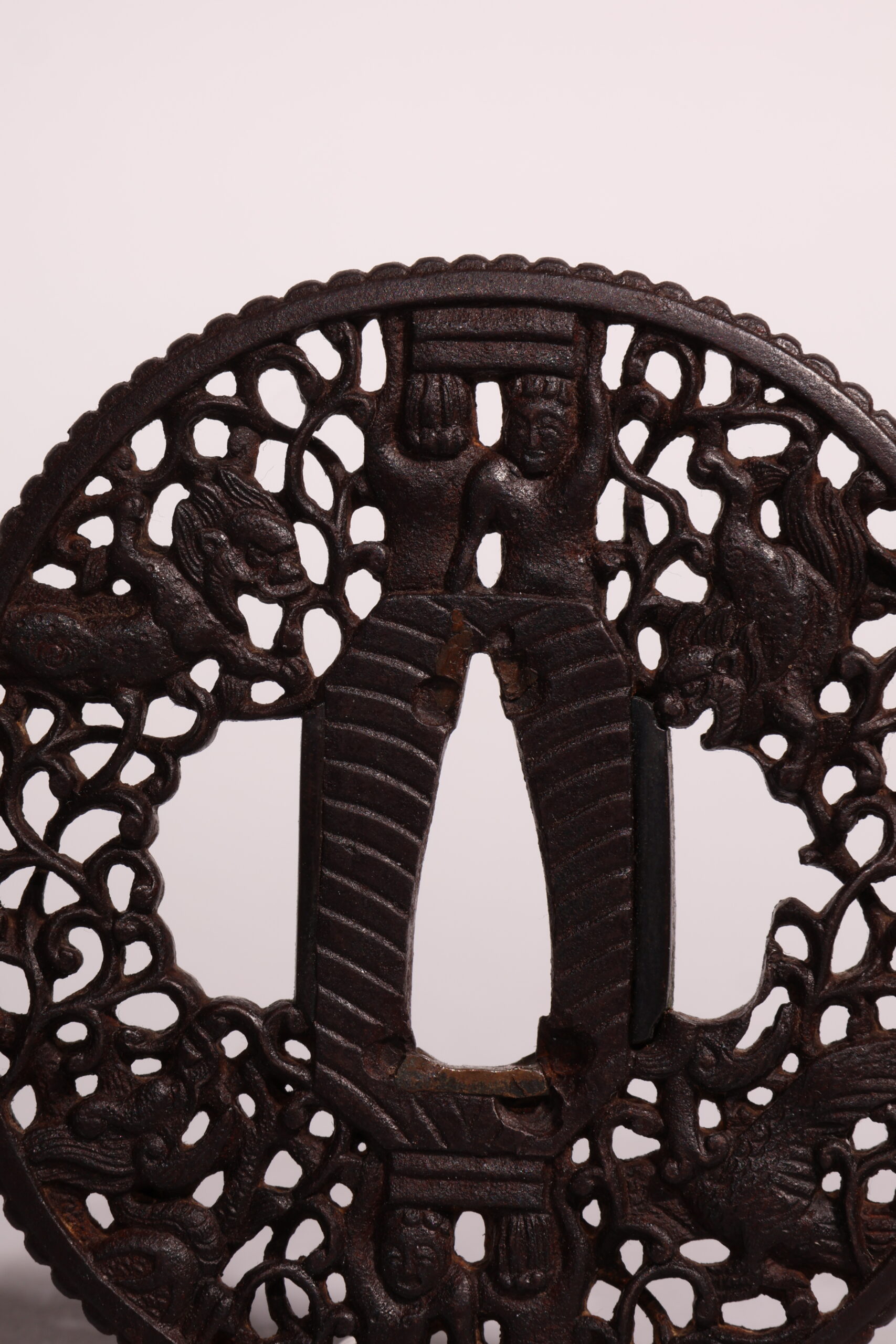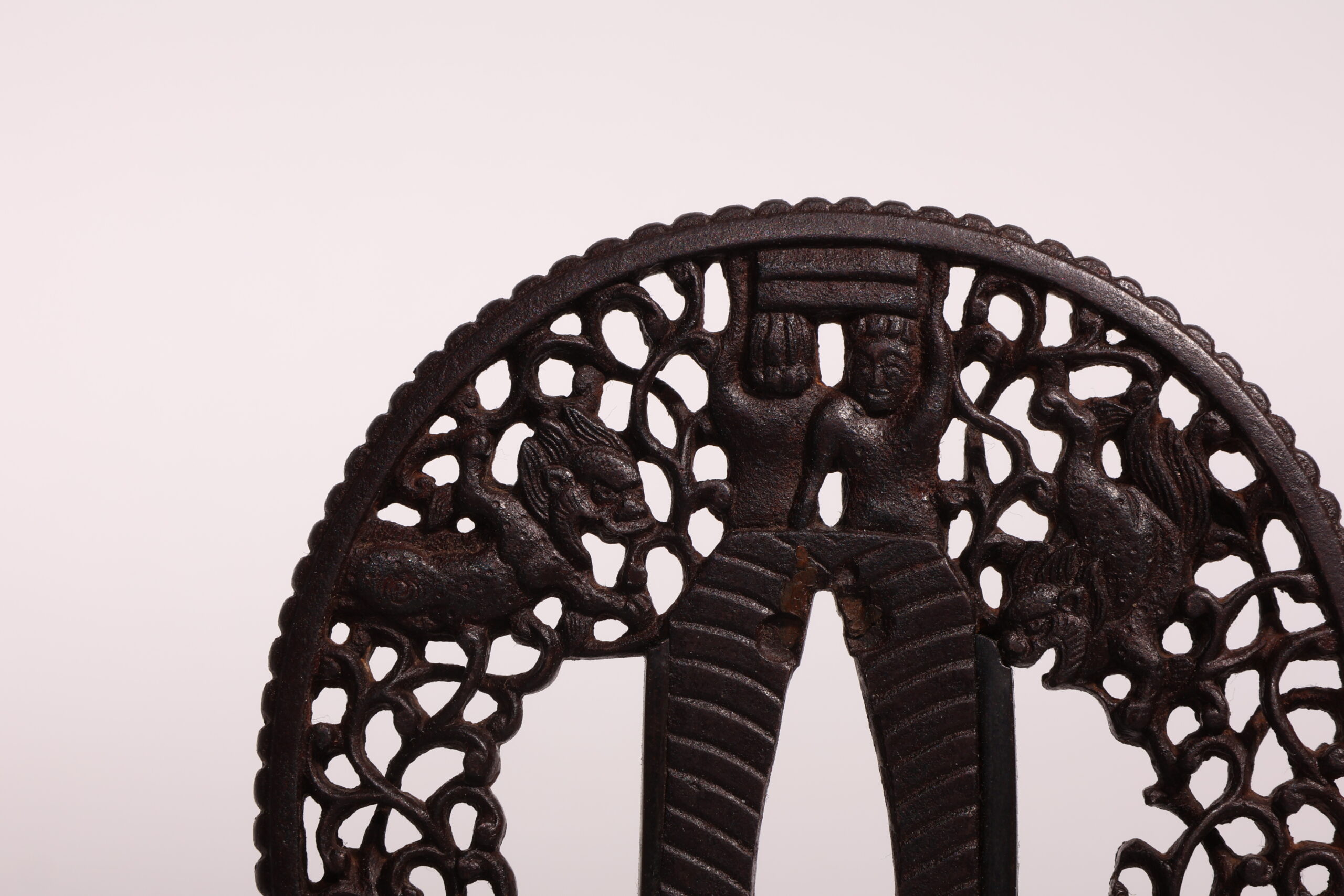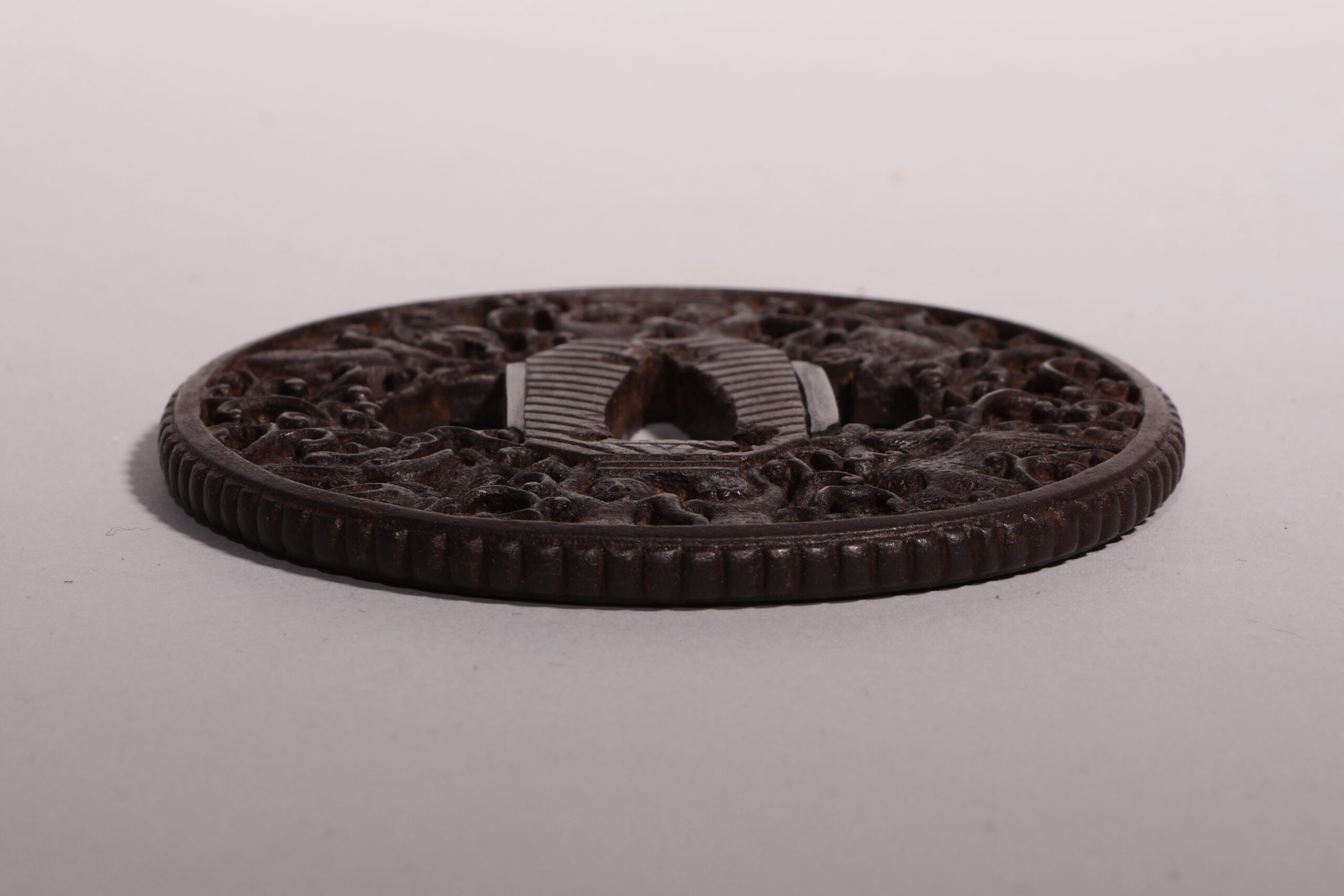Arts of the samurai
RARE NANBAN TSUBA
RARE NANBAN TSUBA
Japan, Edo period (1600-1868)
Height: 7.2 cm
Width: 6.7 cm
Thickness: 4 mm
A finely carved nagamaru shaped iron tsuba with a design featuring four images of the Tanjo butsu (birth Buddha) accompanied by two Pixiu, a dragon and a phoenix among scrolling tendrils; all set within a beaded rim. The elongated octagonal seppa-dai (washer plate) is carved with concave lines and flanked by two hitsu-ana, lined with a flat piece of shakudo.
Each mythological creature carries its own symbolic meaning: the dragon represents power, fortune, and prosperity; the phoenix symbolizes love and immortality; and the pixiu, a fierce beast with a giant mouth, is said to consume only treasures.
The thing that makes this tsuba particularly rare is its depiction of the Tanjō Butsu, or the infant Buddha Shakyamuni. The image is inspired by the legendary moment of Shakyamuni’s birth, in which he raised one hand to the heavens and the other to the earth, proclaiming, “Tenjō Tenge Yui Ga Dokuson” (“Above and below heaven, I alone am honored”). This specific portrayal of the Buddha was traditionally used as the principal image for the Kanbutsue(Buddha Bathing Ceremony), a celebration of Shakyamuni’s birth.
What makes this piece even more intriguing is that all four representations of Buddha are sculpted in three dimensions. The two upper figures raise their left arms, while the lower two raise their right—a distinction that reflects different cultural conventions. In traditional Japanese iconography, the right arm is typically raised toward heaven, whereas in Chinese representations, it is the left. Whether it is significant that the Chinese-style depiction of the Tanjō Buddha is positioned above the Japanese one, and that pixiu flank the Chinese variant, is a matter for interpretation.
Price: € 1750,-
Object #103
If you need more information, send us an e-mail directly.
Please mention the object number in your enquiry.

